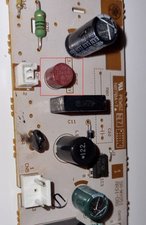Power fuse got blown when inserting into wall
I have a japanese rice cooker with the brand name being panasonic SR-MY051 and i am trying to locate the fuse that got blown but im slightly new to this type of stuff so my experience in locating the correct component isn't too great. When the fuse it on the board, on the board itself it says "ZNA" not sure what that stands for but i assume it is the failsafe incase of something like this happens.

Es esta una buena pregunta?


 2
2 
 373
373  1.5mil
1.5mil 

1 comentario
@choukosenpai the "ZNA" is actually ZNR. Check the letter for the Resistor R80. Identical font. ZNR actually is a component. ZNA used to be a manufacturers code for a diode, which this component definitely isn't :-)
- de oldturkey03